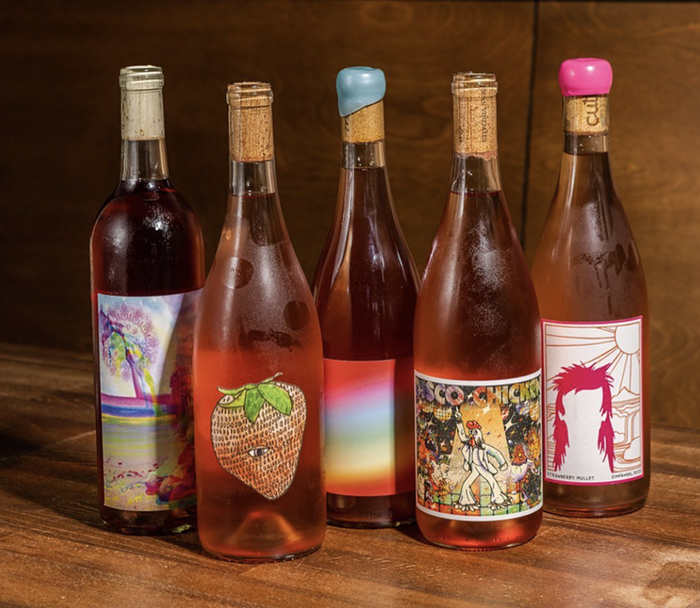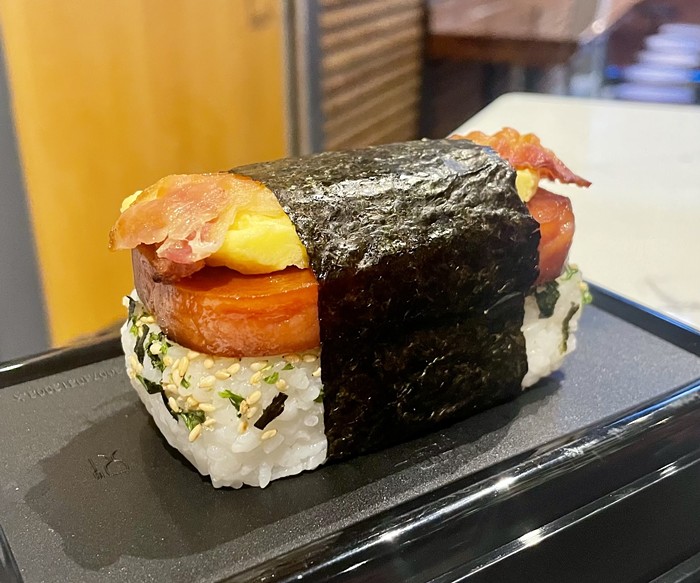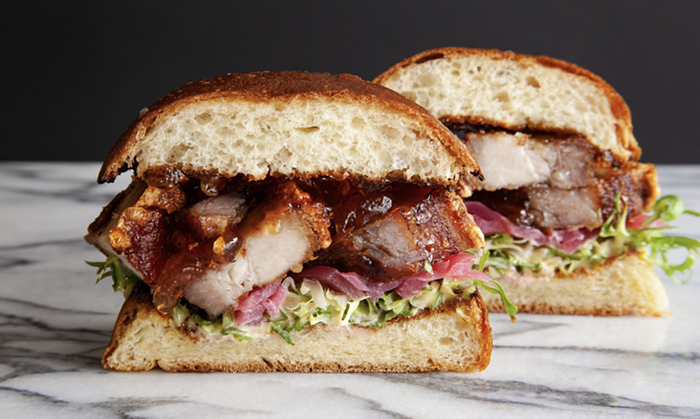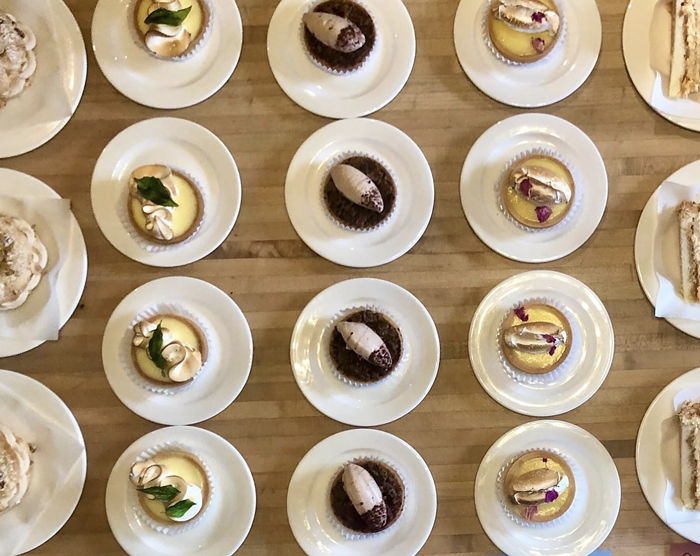Until recently, I had never eaten sunflowers before, let alone known that they were edible or tasty. But then I had a dish of braised sunflowers ($8) at Cafe Barjot.
The centers of the young flowers were trimmed and quartered to resemble artichoke hearts, cooked until they were tender but still pleasantly firm, and imbued with a lemony flavor. Shaved summer squash, blanched squash vines—complete with thick stems, big leaves, and long, curly tendrils—and a smooth and deliciously earthy sunflower-seed tahini accompanied them. The dish was unlike anything I'd had before, and it was delicious—especially when the flowers were dragged through the slightly smoky tahini.
I had eaten the dish on a Wednesday night, but by Thursday morning it was gone from the menu. Chef Nick Coffey had been sourcing unopened sunflowers from Sam Bowhay, who grows a field of flowers at Local Roots Farm, but the sudden onset of cool, wet weather two weeks ago had finished Bowhay's crop.
For Coffey, relying on local, seasonal ingredients makes him especially attuned to changes in the season. "Summer is all about fresh and delicious. There's almost less thinking, and it's a little easier to make a great dish," he says. "But as the season changes into fall, the flavors become more subtle."
When I spoke to Coffey recently, he talked excitedly about some new items he'd just put on the menu, including a matsutake mushroom dish ($8) that was captivating for both its simplicity and creativity: a single matsutake mushroom, the cap lightly grilled and served gills-up, next to a dollop of madrona bark cream whipped so thick that I mistook it for a meringue. Underneath were shaved raw stalks of the mushroom's stem; on top was a scattering of nettle seeds.
It takes balls to serve a plate with little more than one mushroom on it. But that boldness requires you to take your time with the dish, assembling balanced bites from all the ingredients, whose subtle, shared notes of cinnamon, smoke, and earth echo each other and amplify into a flavorful punch.
A bowl of shaved summer corn and diced lobster mushrooms ($9) demanded the same sort of attention. From the first bite, the sweet, crunchy kernels played nicely with the nutty, firm pieces of mushroom. But the fun really began upon discovery that hidden underneath was a cultured cream that brought a delightful tang and richness. Adding another layer of musky flavor—and wonder—was a powder dusted on the bowl's edge made from dried huitlacoche, or corn smut, a naturally occurring fungus that infests corncobs with tumors that resemble mushrooms.
Barjot's menu is vegetable-centric, but Coffey also has a way with meat.
Two pieces of moist chicken ($16), a leg and a thigh, came slathered with a deep maroon-colored relish made of fermented cherries. Tearing into the meat, the cherry brine bled into the bowl and commingled with the chicken juices to form a lovely sauce that seemed to have notes of Chinese five-spice. Coffey explained that the cherries are fermented with Mexican tarragon, which imparts a distinct anise flavor. He also mentioned that the dish may soon be changing to use duck instead of chicken. (The thought of darker, gamey meat with those cherries thrills me.)
I could have eaten an entire plate of just blistered shishito peppers ($9)—smoky, sweet, spicy, and just a little bitter—but they were made even better by the paper-thin slices of peppery, house-cured coppa they were piled on top of. Having absorbed some of the warmth of the shishitos, the coppa's fat seemed to melt immediately on the tongue. The dish also came with pieces of melon and a heavy-handed drizzle of caramelized honey, both of which were sugary and unnecessary.
At 800 square feet, Barjot is small, and its kitchen has just two induction burners and an oven. As a result, Coffey has had to build his menu on dishes that rely on prepped ingredients that can be easily reheated or assembled cold to order. It's part of why he relies so heavily on fermenting, drying, and curing. But Coffey also views these time-intensive practices as essential to his vision.
Coffey came to Barjot almost a year ago, under the agreement that he'd temporarily help owner Wylie Bush get dinner service started. But he soon found that the tiny kitchen became home to his many projects.
"I kept putting more roots in here," says Coffey. "And definitely part of my style is the processes—and long processes. So I thought I should stay here for a while."
For Coffey, time is as much of an ingredient as any vegetable or animal—and that includes his development as a chef. Before Barjot, he spent four years at Sitka & Spruce, working his way up from the garde manger station to running the kitchen for chef and owner Matt Dillon. "I grew the most there," Coffey says. "It was a great environment. Sitka allowed me to experiment and hone what I was learning."
According to Coffey, the sunflower dish began as a failed attempt at Sitka with chef Edouardo Jordan, before Jordan moved on to Dillon's Bar Sajor. And Coffey's savory madrona cream was inspired by an ice cream made by his former coworkers that he filed away for some later purpose.
"Every year when you revisit a dish, you've grown, personally and professionally," he says. "I just want to keep going, keep doing something new." ![]()



















